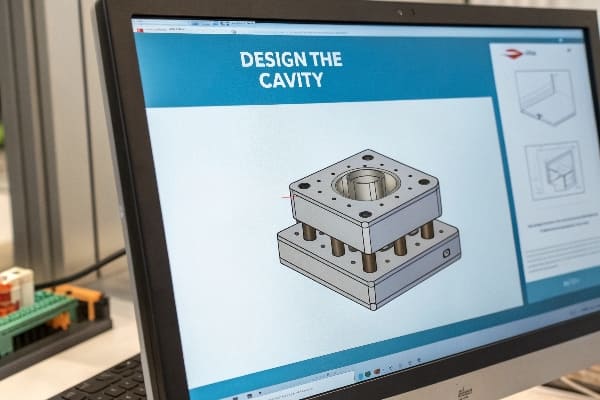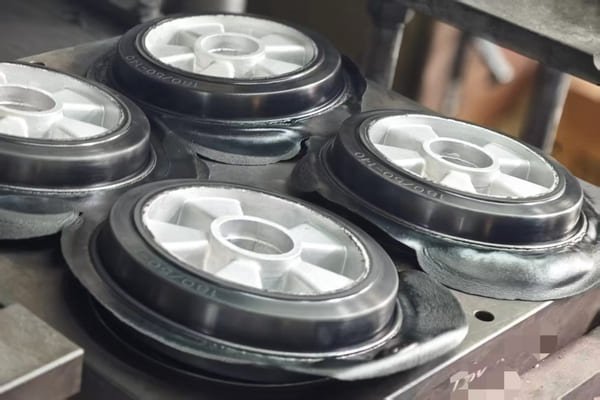Delays, guesswork, and unclear specs cause failed trials. You can avoid them with a simple, buyer-friendly path that gets samples right the first time.
Prepare clear drawings and a short test plan, pick the proper rubber and hardness, align on a sample mold and lead time, confirm documents, then ship fast with agreed Incoterms and payment.

You run the process with confidence when each step is clear. Procurement gets predictable timelines. Engineering gets usable data.
What files and details should you send to start fast?
You lose time when inputs are vague. Clear files and a short checklist speed everything.
Send a 2D drawing with tolerances, a 3D STEP, material and hardness targets, and a short test plan. Include quantities, shipping city, Incoterms, and your target date.

Use DIN ISO 3302-11 to specify molded-part tolerances. State hardness as Shore A2 with method (ASTM D22403, 3 s at 23 °C). Mark CTQ dimensions4 and measurement points. Add media5, temperature6, and expected life7. Share assembly photos if possible to prevent costly rework.
Your quick input checklist
- 2D drawing8 (PDF/DWG) with DIN ISO 3302-1 class
- 3D model9 (STEP/IGES) for split-line review
- Material and hardness target (e.g., EPDM10 70 ShA)
- Quantity for samples, and any bridge-run plan
- Test plan (leak, compression set11, tensile)
- Incoterms12 (EXW/FOB/DAP/DDP) and ship-to city
- Target date, packaging needs, and labeling
How do you pick material, hardness, and tolerances for your samples?
Wrong material wastes time and money. Match polymer family, hardness, and tolerance to the job.
Choose rubber by media and temperature, set hardness by load and sealing pressure, and mark tolerances by function. This gives stable trials and easy sign-off.
[^10] O-rings with engineering diagrams in background](https://rubberandseal.com/wp-content/uploads/2025/04/O-ring-Material-Comparison.jpg)
Choose material by environment
Start with the environment. Water, steam, and UV suggest EPDM. Oil and fuel suggest NBR or FKM. High heat and oil suggest HNBR. Wide temperature or food contact suggests silicone (VMQ); pick platinum-cured options for low odor and compliance. Ask about sanitizers, glycol, and cleaners. Avoid over-specification that adds cost without benefit.
| Material | Typical Temp (°C) | Key Resistance | Common Approvals* | Use Cases |
|---|---|---|---|---|
| EPDM10 | −40 to +130 | Water, steam, ozone | EN 681-1 (water), WRAS | HVAC gaskets, outdoor seals |
| NBR13 | −30 to +110 | Mineral oil, grease | — | Pumps, oil contact |
| HNBR | −30 to +150 | Oil, heat, ozone | — | Under-hood, powertrain |
| FKM (Viton) | −20 to +200 | Fuel, solvents | — | Fuel/chemical systems |
| Silicone (VMQ) | −60 to +230 | Wide temp, inert | FDA 21 CFR 177.2600; EU 1935/2004 | Food, medical, electronics |
* Approvals depend on compound and test thickness.
Pick hardness (Shore A)
Set hardness by seal compression, assembly force, and vibration. Too soft can extrude or creep. Too hard can hurt sealing and assembly.
| Application | Typical ShA | Why |
|---|---|---|
| Static gaskets on flat flanges | 50–60 | Conforms to surface, easy clamp load |
| O-rings for general use | 60–70 | Balance of seal force and wear |
| Dynamic seals / lips | 70–80 | Shape retention, wear resistance |
| Heavy clamp, high pressure | 75–90 | Extrusion control |
Choose tolerance class (DIN ISO 3302-1)
Keep it simple. Sealing edges and small critical features use M2. Large simple profiles use M3. Very tight parts use M1 only when necessary.
| Feature | Class | Note |
|---|---|---|
| Thin lips, precision seats | M1–M2 | Tight fit, critical sealing |
| General molded parts | M2–M3 | Most HVAC gaskets |
| Large simple parts | M3–M4 | Generous fit, low risk |
Should you ask for a sample mold or go straight to production?
Use a sample mold14 when risk is high or geometry is new. It turns drawings into trustworthy parts fast.
A sample mold (1–4 cavities, pre-hardened inserts) cuts cost and lead time. Use it to validate dimensions, sealing, and cure windows. Move to multi-cavity production after the data is stable.

When a sample mold makes sense
- New geometry or unclear shrinkage
- Tight tolerances at sealing edges
- Need for DOE on cure time/temperature/pressure
- Short bridge run needed before the big tool
Time and cost snapshot
| Item | Sample Mold | Production Mold |
|---|---|---|
| Cavities | 1–4 | 4–32+ |
| Lead time | ~2–4 weeks | ~4–10+ weeks |
| Flexibility | High (easy rework) | Low (changes costly) |
| Unit cost | Higher | Lower |
If your project is urgent, plan bridge production15 on the sample tool while the production mold is in build. Clean vents and control flash to keep dimensions stable.
What testing and documents should come with your samples?
Decision makers need proof, not promises. Send a compact, auditable pack with the parts.
Include material and hardness certificates, a dimensional report versus the drawing, and process parameters. Add compression-set, leakage, and aging tests when needed.

Build a PPAP-lite for samples
- Drawing with tolerance class and CTQ callouts
- Material cert and EN 10204 3.1 if required
- Hardness report (ASTM D2240, dwell, temperature)
- Dimensional report (CMM or gauges), sample size, method
- Process sheet (press temp/pressure/time, post-cure, lot trace)
- Optional: Compression set, tensile/tear, fluid immersion, leak/pressure tests
Typical sample sizes
| Part Type | Qty | Reason |
|---|---|---|
| O-rings / flat gaskets | 20–50 | Checks spread and assembly |
| Complex seals / lips | 10–30 | Verifies thin sections |
| Hoses / bellows | 5–20 | Confirms collapse and venting |
How do you control cost, lead time, and shipping?
Plan cost and time with a few simple levers. Small choices protect your schedule.
Choose the right process (compression for small runs, injection for scale), keep cavities modest at first, lock specs early, and pick the right shipping mode for the deadline and budget.
Cost levers you control
- Keep cavity count low at the prototype stage
- Avoid cosmetic texturing until geometry is frozen
- Use a clear tolerance class; avoid “as tight as possible”
- Specify only the tests you need for approval
Shipping options (typical)
| Mode | Transit (to EU) | Use When | Note |
|---|---|---|---|
| Express courier (DHL/UPS) | 3–7 days | Small/light, urgent | Higher cost, simple customs |
| Air freight | 5–12 days | Medium weight, urgent | Add local handling time |
| Sea freight (LCL/FCL) | 25–45 days | Heavy/bulky, cost-sensitive | Lowest cost, plan ahead |
Pack samples in anti-dust bags with labels and QR links to reports when possible. Mark outer cartons with part number, PO, and lot code.
What payment terms, Incoterms, and safeguards should you use?
Clear terms avoid delays and extra bank fees. Stick to simple options that B2B teams trust.
For samples, use TT in advance for small amounts, or milestone terms for larger tools. Agree Incoterms early (EXW, FOB, DAP, DDP). Keep the beneficiary name exact to prevent banking returns.
Practical choices
- Incoterms: EXW/FOB when you have a forwarder; DAP/DDP for turnkey convenience
- Payments: TT advance for small orders; split tooling 50/50 (kickoff / samples ready)
- Banking hygiene: use the exact beneficiary name and SWIFT/IBAN as provided
- Compliance: request invoice, packing list, and HS code; add origin declaration if needed
Quality safeguards
- DFM sign-off before cutting steel
- Steel-safe on risky dimensions for easy polish-down
- First-Article (FAI) with dimensional and hardness data
- AQL or lot sampling if you run bridge production
- Optional pre-shipment inspection for big lots
Can you run a small trial lot before the big order?
Yes. You can secure a bridge run to support pilot builds or early sales.
Set a capped shot count on the sample tool, schedule vent cleaning, and hold the same press settings and compound lot as your FA lot. This protects dimensional stability.

Bridge-run guardrails
| Item | Control | Benefit |
|---|---|---|
| Shot count | Pre-defined cap | Avoids wear-related drift |
| Maintenance | Vent clean / land touch-up | Keeps flash thin |
| Sampling | CTQ spot checks each lot | Fast drift detection |
| Change control | Geometry freeze | Prevents revalidation loops |
Your 7-step ordering flow16 (simple and fast)
Buyers like a clear path. Keep it short and data-driven.
Use a 7-step path: files → DFM → quote → tool → samples → documents → shipment.
The steps
- Send files and target specs (drawing, STEP, material, hardness, tests, quantity, Incoterms, date)
- DFM review and shrink strategy; confirm tolerance class and CTQ points
- Quote for sample mold (if needed), sample parts, tests, and shipping
- Tooling build or soft-tooling prep; schedule shared
- Molding trials; tune cure window and vents; record parameters
- Documents package (FAI, hardness, certs, optional tests)
- Shipment by agreed mode; get tracking and packing list
Work with Julong Rubber
- 📧 Email: info@rubberandseal.com
- 🌐 Website: www.rubberandseal.com
- 🏭 Brand: Julong Rubber — China-based factory, B2B wholesale only
- 🧰 Products: rubber seals, custom rubber parts, rubber wheels, rubber tubes, rubber gaskets
- 🇨🇳 Export focus: Germany, France, the Netherlands
Conclusion
Ordering rubber samples from China is easy when your inputs are clear, your materials fit the job, and your tool plan matches risk. Follow this path to receive reliable samples fast.
-
Understanding DIN ISO 3302-1 is crucial for ensuring proper molded-part tolerances in manufacturing. ↩
-
Learn about Shore A hardness to ensure the right material properties for your applications. ↩
-
Explore ASTM D2240 for insights on standardized hardness testing methods. ↩
-
Understanding CTQ dimensions helps in identifying critical quality attributes in production. ↩
-
Discover how different media influence the choice of rubber materials for optimal performance. ↩
-
Learn about temperature compatibility to select the right rubber for your environment. ↩
-
Understanding expected life helps in planning maintenance and replacements effectively. ↩
-
A well-prepared 2D drawing is essential for accurate manufacturing and quality control. ↩
-
3D models provide a visual representation that aids in identifying design issues early. ↩
-
Explore this resource to understand EPDM's unique properties and its ideal applications, ensuring you make informed material choices. ↩ ↩
-
Compression set testing is vital for assessing the durability of rubber seals under pressure. ↩
-
Understanding Incoterms is crucial for clear shipping and payment terms in international trade. ↩
-
Explore this resource to understand NBR's unique properties and its ideal applications in various industries. ↩
-
Sample molds can significantly reduce costs and lead times while validating designs. ↩
-
Bridge production allows for early manufacturing while waiting for full-scale production. ↩
-
A clear 7-step ordering flow simplifies the procurement process and enhances efficiency. ↩








